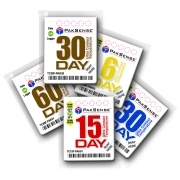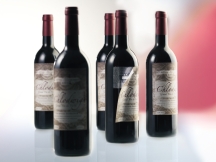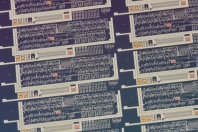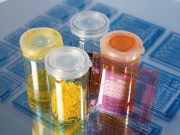

The future is here
Electronically enhanced packaging is entering a new phase of acceptance, with early-adopter industries finding more ways to leverage it.Personal care companies are using smart packaging to boost sensory appeal on-shelf while pharmaceutical companies focus on functionality, developing blister packs that help patients take their medication as prescribed.
Though food and beverage marketers are not as far along with this type of packaging as their peers in other markets, industry watchers agree it’s just a matter of time before electronically enhanced packaging is a supermarket staple. When food and beverage companies do make the shift, the benefits will include:
• Unique product differentiation.
• More efficient promotions.
• Enhanced product safety.
• Improved inventory control.
• Better brand protection.

Lighting up the shelf
“Energized” packaging is cropping up in a variety of guises, including packages that engage the senses using light, sound and motion. Examples include the Kent cigarette box, TY KU liqueur bottle and NXT personal care product packaging, which light up, and the Victoria’s Secret Sexy Little Things body mist and perfume bottles, which respectively purr and whistle.“The food and beverage marketplace is in the very early stages of adopting these types of applications. And while we may not see much of this yet in the marketplace, we can expect an increase in interactive product packaging and virtual [point-of-purchase] displays,” says John Perkins, vice president, global marketing and business development, at MWV (previously MeadWestvaco Corp.).
MWV teamed up with T-ink Inc. to develop the electronically enabled Kent box for British American Tobacco. The reusable package, which lights up with a scrolling message when touched, contains an electronic top panel printed with conductive ink.
The ink, which can be printed on standard presses, is used to create an integrated circuit; the technology operates without wires, switches or buttons, eliminating bulk and making the package affordable.
For sensory pop, the TY KU and NXT bottles use battery-powered light emitting diodes (LEDs). The base of the TY KU liqueur bottle holds an LED and a sensor that cues the light to go on when the bottle is picked up.
The NXT bottles incorporate a chip that triggers the LED to light up every 15 seconds when the bottle is upright. A separate sensor turns off the LED when the bottle is on its side or upside down; NXT products are shipped upside down to preserve battery life.
Cheryl Jones, marketing director at NXT brand owner Clio Designs Inc., believes the NXT packaging technology would be suitable for food or beverages, particularly in promotional or marketing applications for products with a unit price of $5 or more.

'Center of brand communication'
Not content to just catch the consumer’s eye, leading marketers are exploring how packages can use electronics to engage consumers by delivering brand, product or promotional information on-demand. Mobile phone technology will be a key enabler for these applications.The Snap2C portfolio of paperboard packaging applications from Graphic Packaging Corp. will enable consumers to use their internet-enabled, optical scanner-equipped mobile phones to scan a two-dimensional (2D) bar code on a package, automatically bringing up a product-specific webpage or site.
Well suited to food and beverage applications, the technology could be used to convey factual information such as ingredients, nutritional content and processing methods-and/or marketing and promotional opportunities in the form of coupons, contests, loyalty programs, surveys and commercials. Entertainment content such as ring tones and movie previews also could be offered.
In essence, “The package becomes the center of brand communication and brand promotion, right at the point of purchase. And this capability also goes home with you,” says Charles Brignac, marketing manager at Graphic Packaging. At home, the consumer could scan the 2D bar code to access point-of-use information such as recipes and cooking videos.
From a marketing perspective, it’s no coincidence mobile phones are part of the equation.
“Generation X and the Millenials are the huge adopters of cell phone technology and the ones who are really important to brands, especially in the food and beverage segment,” Brignac points out. “There’s a strong correlation between the demographics on cell phone use and what the brands are trying to accomplish in terms of reaching new customers.”
Several companies, primarily in food and beverage, are expected to be in test market with Snap2C applications by the end of 2008.

The safety issue
In addition to offering marketing capabilities, electronically enabled packaging holds the power to greatly increase package functionality.“I see a big benefit to [using] smart packaging in the category of food and beverages. There is a lot of value in preserving safety, in particular,” says Dan Williams, vice president of product/business development at Konarka Technologies Inc.
He adds, “People want to add devices that enable the package and product to be smarter,” preventing the sale of spoiled or damaged consumables. Add-on devices include sensors that flag conditions hostile to food, such as temperature extremes.
Adding a uniquely electronic twist, sensors that not only track temperatures but also create a record of the information have been developed. Thus the food manufacturer can archive the data for retrieval in the event of a recall or audit.
The PakSense TXi Label digitally records and stores the temperatures a product has experienced throughout its distribution cycle. The label supplier programs a product-specific temperature range into each label prior to use.
The label, which is the size of a sugar packet, incorporates a silicon-based printed circuit assembly and a power supply. The user snaps the corner of the label to activate it, then attaches it to the product, package or shipper. The label is encased in waterproof, food-safe packaging. “That enables it to be placed right on top of a product. You could put it on top of a salmon or a lobster claw, for example, and it gives highly accurate product reads,” says Amy Childress, marketing programs director at PakSense. LEDs on the label provide a quick visual indication of the product’s viability.
Because the label’s non-volatile memory stores the product’s cold-chain temperature history, many receiving companies use the labels once only, then store the recorded label with the shipment’s receiving papers. The time and temperature data can be downloaded using a PakSense reader into a Microsoft Excel spreadsheet.
JBS Swift & Co. uses the label for beef and pork shipments, and retailer Albertsons LLC requires this type of label for shipments of produce, fresh meat and seafood delivered to its distribution centers.

Printed electronics
No discussion of electronics in packaging would be complete without a mention of radio frequency identification (RFID). Currently used to track the movement of goods through the supply chain, RFID is finally poised for use on individual packages.The driver for item-level RFID is printed electronics technology, an affordable approach that makes it possible to print integrated circuits on flexible materials such as paper, films and foil using polymer-, metal- or silicon-based inks.
When consumers use an internet-enabled mobile phone to read a printed RFID label, they will gain intelligence about the product that could include including nutrition facts, allergen alerts, product authentication data, sweepstakes rules and/or package recycling instructions. For the retailer, item-level RFID will enhance store-level inventory management.
For now, incorporating item-level RFID into individual packages requires adhering the tag to the package or laminating it to the packaging substrate. In the future, packaging converters will be able to print RFID and other types of electronic circuits directly onto packaging materials. Researchers at Clemson University and the University of California-Berkeley are already working toward this end.
Until now, the price of conventional RFID tags has made item-level adoption of the technology cost prohibitive. But that era is at an end.
“We’re targeting less than five cents per RFID tag, and our goal is to be less than one cent,” says Vikram Pavate, vice president-business development at Kovio. The printed electronic technology at Kovio features silicon-based inks, a metal substrate and ink jet printers.
“Those who most want this technology to succeed are the food and beverage folks,” he says, adding that the beverage industry has expressed a great deal of interest in item-level RFID and likely would move to it if the price were to fall below the one-cent mark.
Printed electronics promises to eventually bring a variety of affordable smart features to packaging, including biosensors and displays. Printed electronic security tags are already a reality.Thin Film Electronics AB creates anti-counterfeiting tags using memory technology that incorporates printed polymers. The memory cell’s material properties and electrical signature, together with product and security information stored in the memory, create a security tag that is virtually impossible to copy.
Another example, from The Compliers Group, is a printed electronic label that aids drug
compliance and flags double doses by recording when pills are removed from their blister pack. The concept could be used for food packaging, possibly to help diabetics and dieters monitor what and when they eat.

Affordable self-powered technology
Printed power sources also are in development. As an example, Konarka’s Power Plastic, an ink jet-printable photovoltaic material, can be used to power electronic components by converting light from the sun and artificial light sources into energy. Konarka’s technology is unique in its ability to do this, although other companies are researching ways to increase light absorption across a wider spectrum.If, in the future, this type of photovoltaic technology is used on packaging, it will serve the environmental goal of eliminating batteries while creating a package that can store energy even as it sits on a retailer’s shelf. Konarka’s eco-friendly manufacturing processes, which include coating as well as printing, also significantly reduce the cost of photovoltaic cells.
Essentially, the sky’s the limit for what electronics will bring to food and packaging in the next few years. Printed electronics alone, in the view of Kovio’s Pavate, “will add intelligence you couldn’t have imagined 20 or 30 years ago.” F&BP
Kate Bertrand Connolly is a freelance writer based in the San Francisco Bay area, who specializes in packaging, business and technology. Reach her at kate.connolly@sbcglobal.net.
